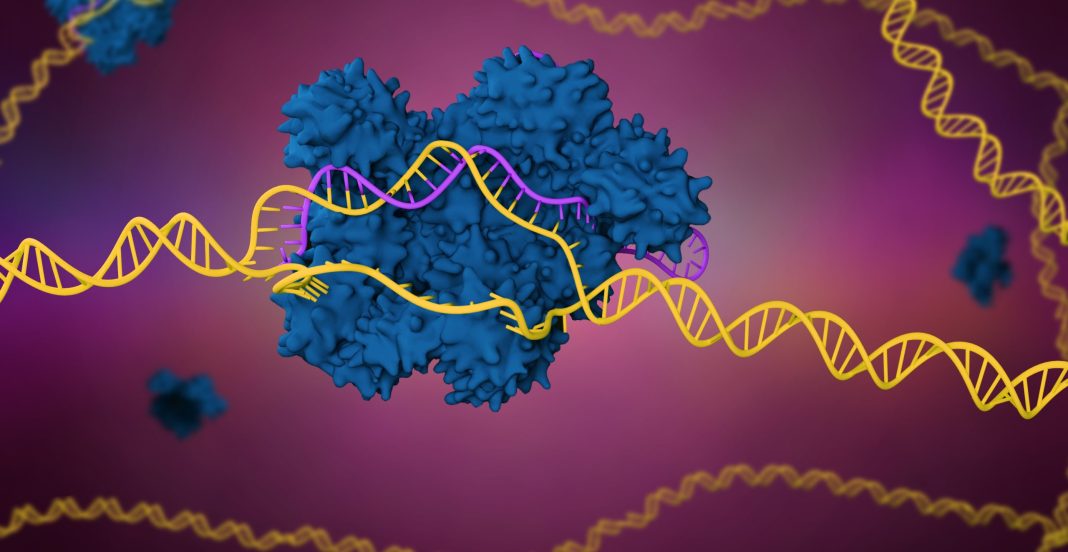In genome editing, it is possible to have too much of a good thing—a good thing known as specificity. Usually, specificity is much desired. It helps minimize the potential for off-target effects. However, specificity can have a downside. It can make it harder to recognize DNA sequences that contain naturally occurring polymorphisms.
Consider the practical implications. For example, if a genome editing system is highly specific, it may target a particular gene while ignoring slightly different variations of that gene. Also, in diagnostic applications, genome editing tools may be overly precise, detecting just one of several closely related pathogens.
To avoid problems such as these, researchers at the University of Toronto have developed CRISPR-Cas genome editing systems that are a little less discriminating, at least when it is in the right place, more or less. These systems have a little wriggle room because they incorporate guide RNAs that substitute “universal” bases for one or more of the usual four RNA bases.
Whether it is natural or synthetic, a universal base is indiscriminate. That is, it is willing to pair with bases of other kinds, not just bases of a particular kind.
“It functions like an asterisk or wildcard in a digital search, in areas where we expect variation or don’t have data,” said Basil Hubbard, PhD, an associate professor of pharmacology and toxicology at the University of Toronto. “With therapeutics, we can target common variants of the same gene from person to person, such as single nucleotide polymorphisms. For diagnostics, we can detect multiple evolved variants of the same pathogen.”
Hubbard served as the principal investigator in a research project that culminated in a new paper, “Guide RNAs containing universal bases enable Cas9/Cas12a recognition of polymorphic sequences.” This paper, which appeared in Nature Communications, introduced a strategy for expanding the capabilities of CRISPR-Cas to the recognition of “nucleic acid targets with high variability and those for which only incomplete sequence information is available.”
“[We] demonstrate that Cas9 can tolerate the inclusion of universal bases in individual guide RNAs, enabling simultaneous targeting of polymorphic sequences,” the article’s authors reported. “We demonstrate the applicability of this technology to targeting multiple naturally occurring human SNPs with individual guide RNAs and to the design of Cas12a/Cpf1-based DETECTR probes capable of identifying multiple evolved variants of the HIV protease gene.”
Experimental CRISPR therapies have shown potential to eliminate genetic disorders, including sickle-cell anemia and muscular dystrophy. But these therapies do not always work in part due to natural genetic variations among individuals, according to some studies.
Hubbard said that his group’s approach could help address this problem, but that it currently works best in vitro and it would need to run faster in the cellular environment, perhaps with a re-engineered Cas enzyme.
The technology shows more promise for immediate application in diagnostics. Hubbard’s laboratory tested the system’s function in eight variants of HIV, each with differing resistance to current antiviral drugs. A standard guide-RNA without universal bases detected only three of the eight variants, while a system with just three universal-base substitutions found all eight variants.
“There is tremendous diversity among pathogens, especially viruses and bacteria, and they evolve very quickly,” Hubbard pointed out. “The system works very well to detect that kind of variation, and we think it could be useful across clinical conditions.”
Hubbard conceived the idea of using universal bases while working to make CRISPR-Cas systems more specific. His laboratory, then based at the University of Alberta, showed that insertion of synthetic or “xeno” nucleic acids into guide RNAs could dramatically reduce off-target gene editing with CRISPR-Cas9. (Hubbard moved his laboratory to the University of Toronto last fall.)
Off-target effects that cut an incorrect gene could have detrimental health consequences in a patient, including the development of cancers.
“Our current study gives us more options for tailoring CRISPR specificity,” Hubbard asserted. “Importantly, the specificity of this system is disrupted only at the region where we incorporate universal bases and is preserved in other areas of the sequence, thereby keeping off-target effects to a minimum.”
Hubbard’s laboratory has filed a patent on the technology and is looking to partner with a company that specializes in CRISPR diagnostics. He is hopeful the system will help provide a fast, accurate, and cost-effective way to diagnose several diseases including COVID-19.



